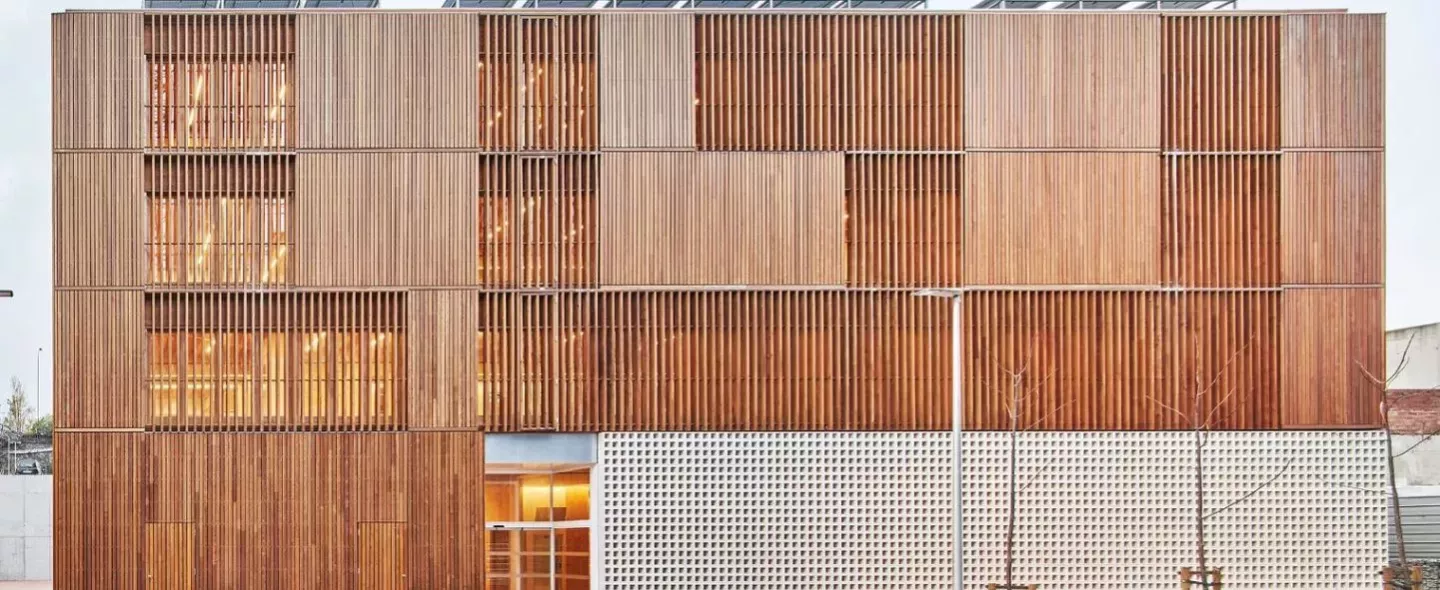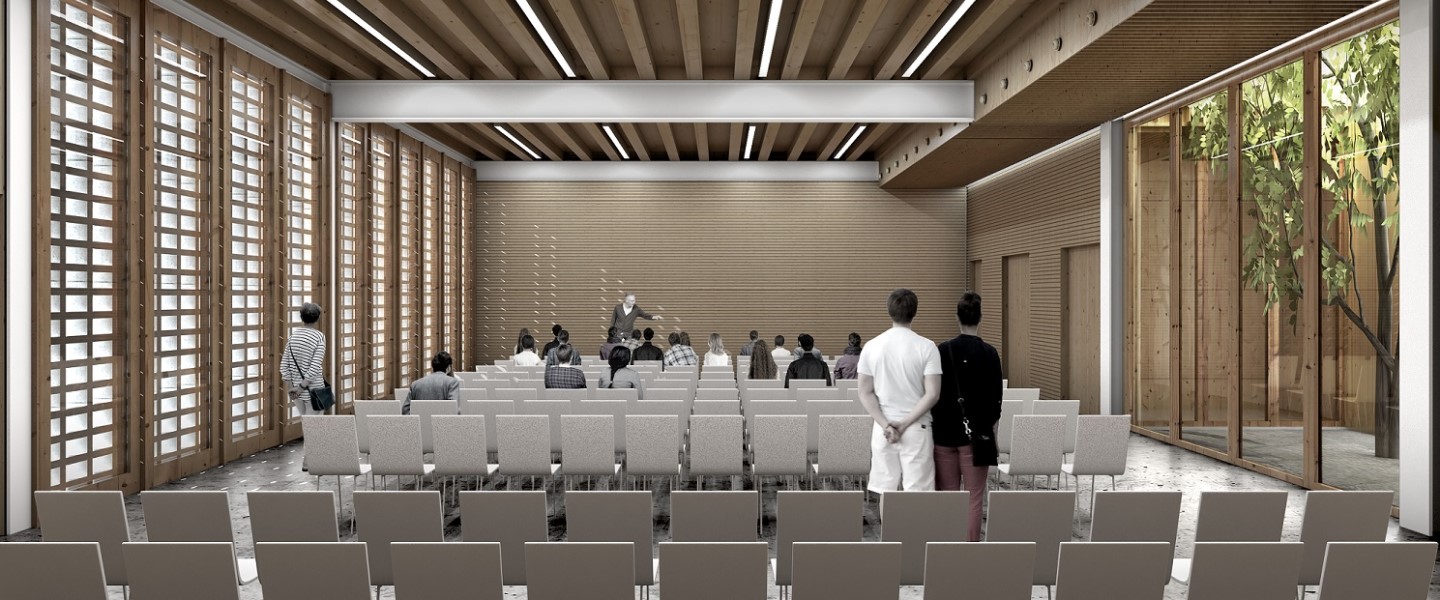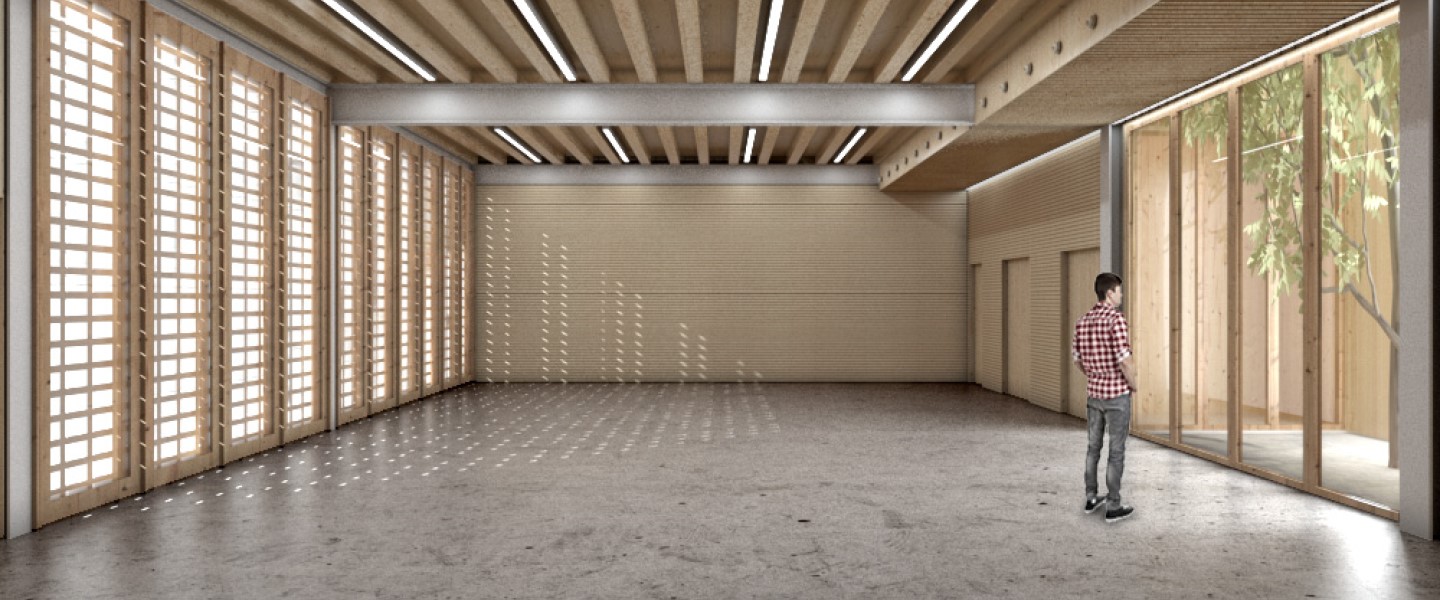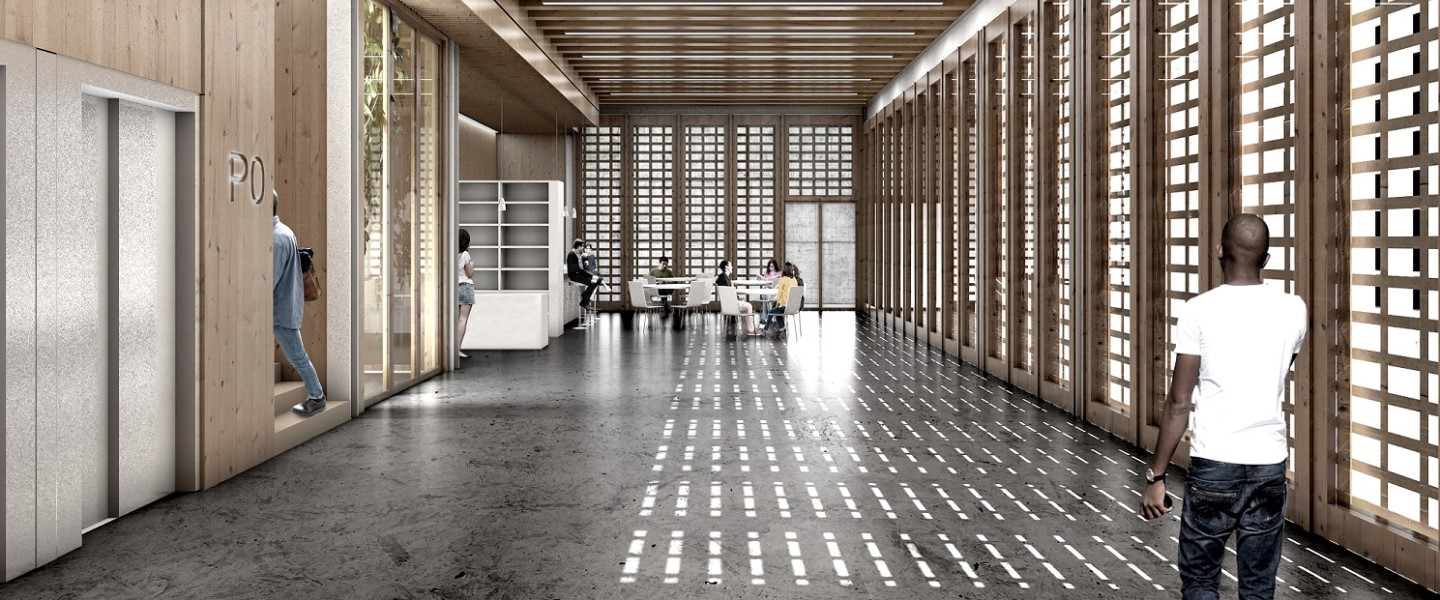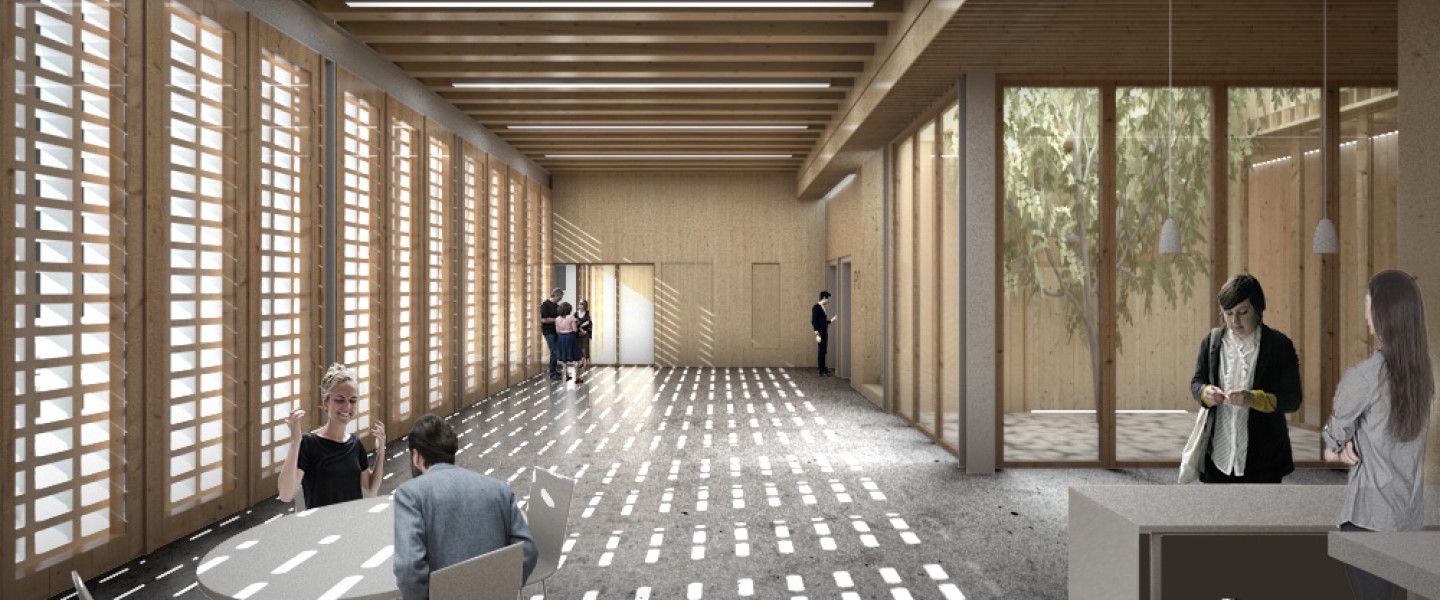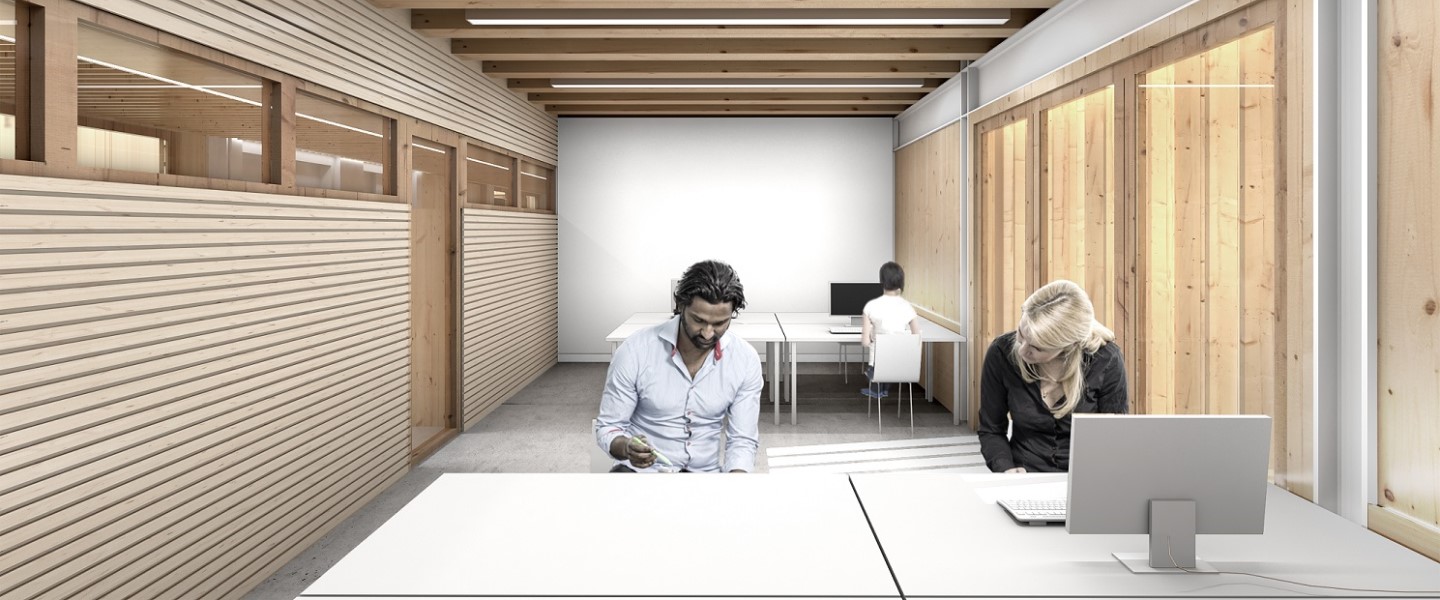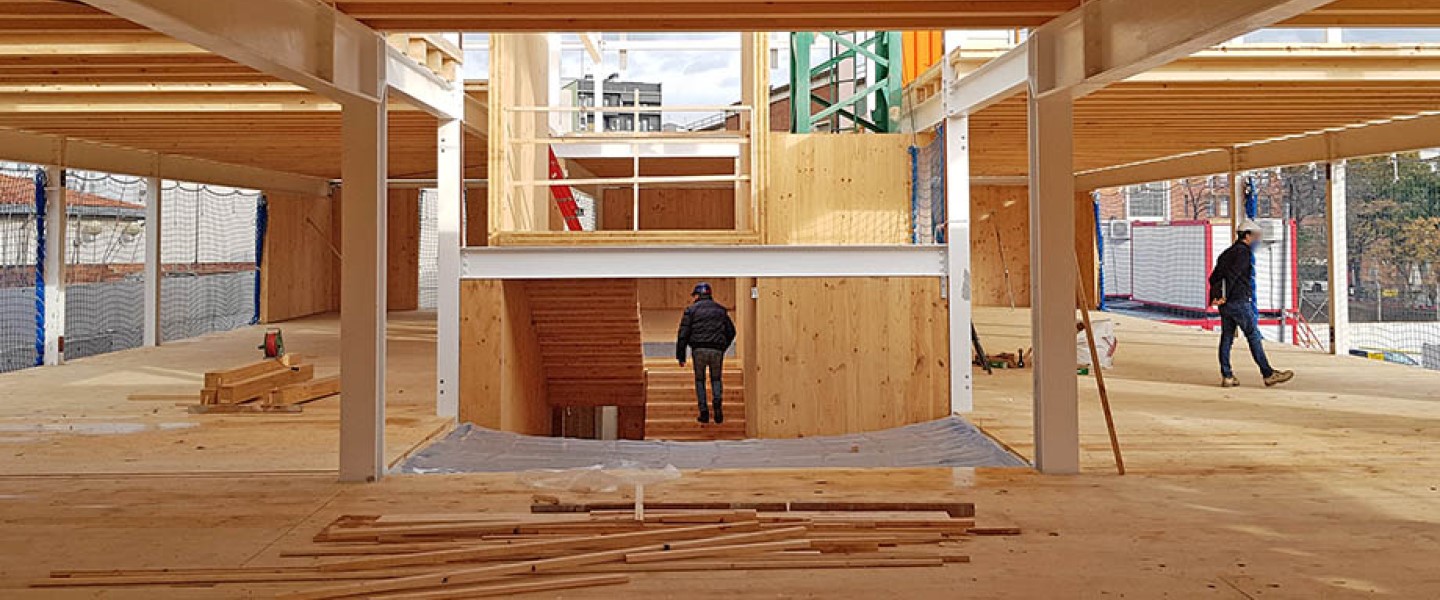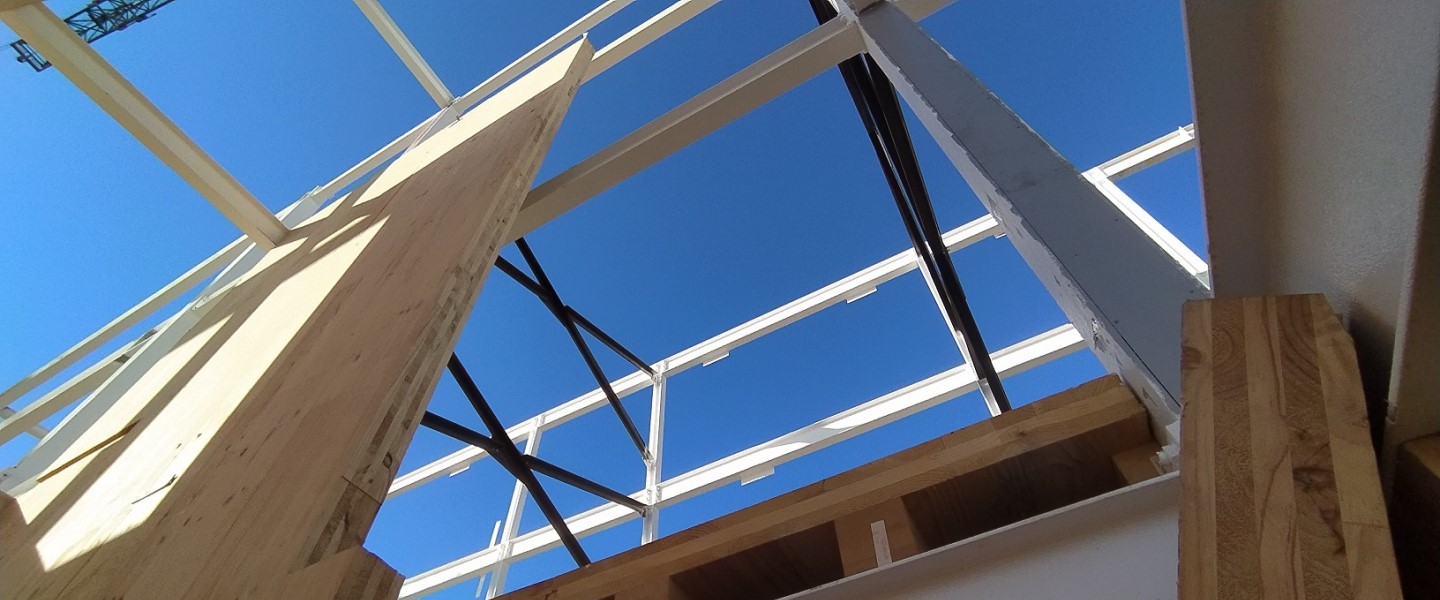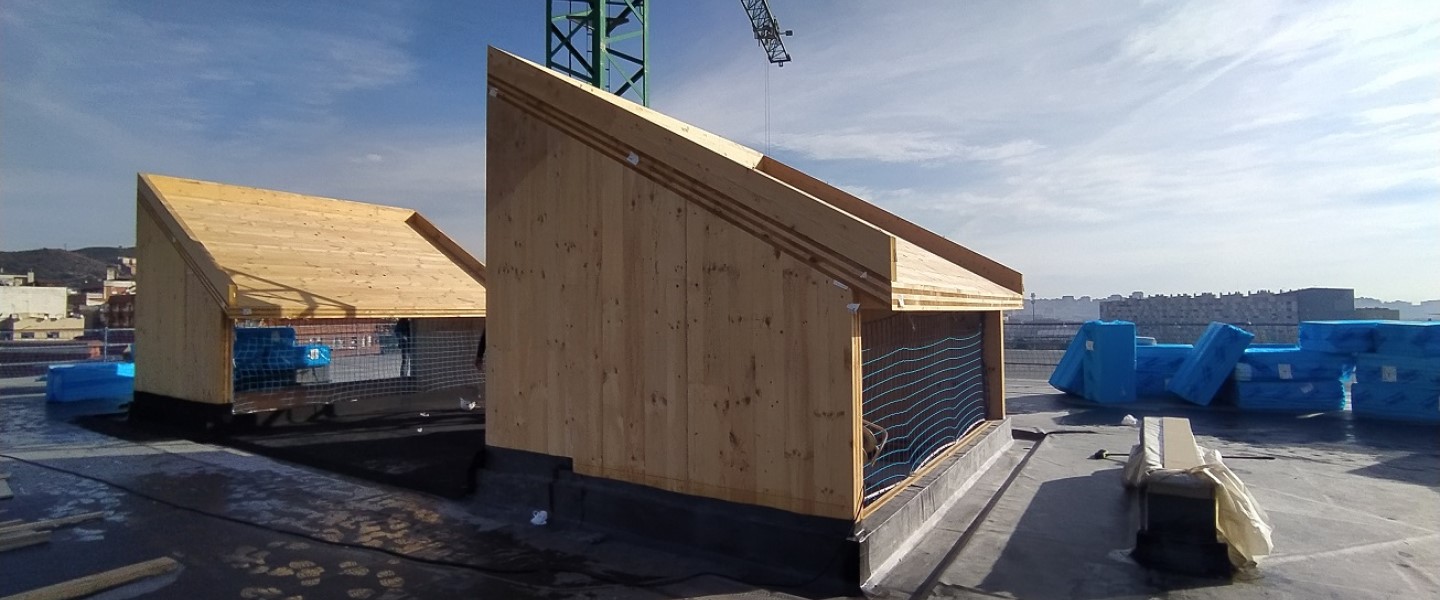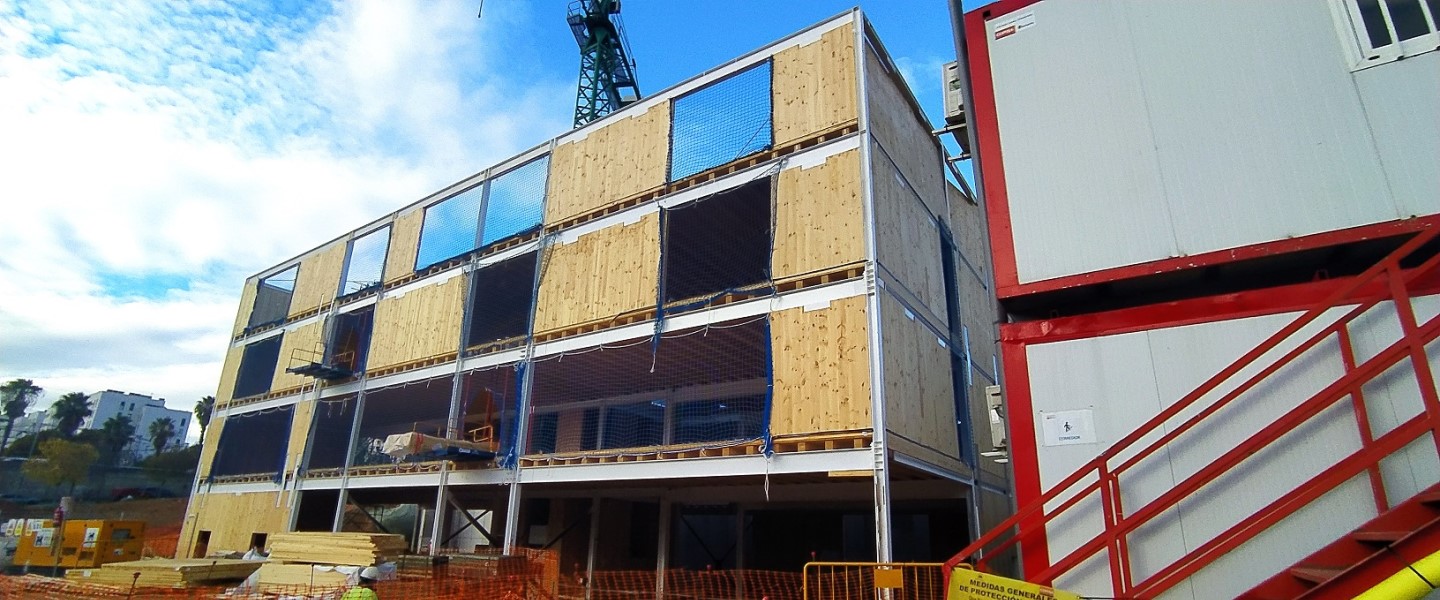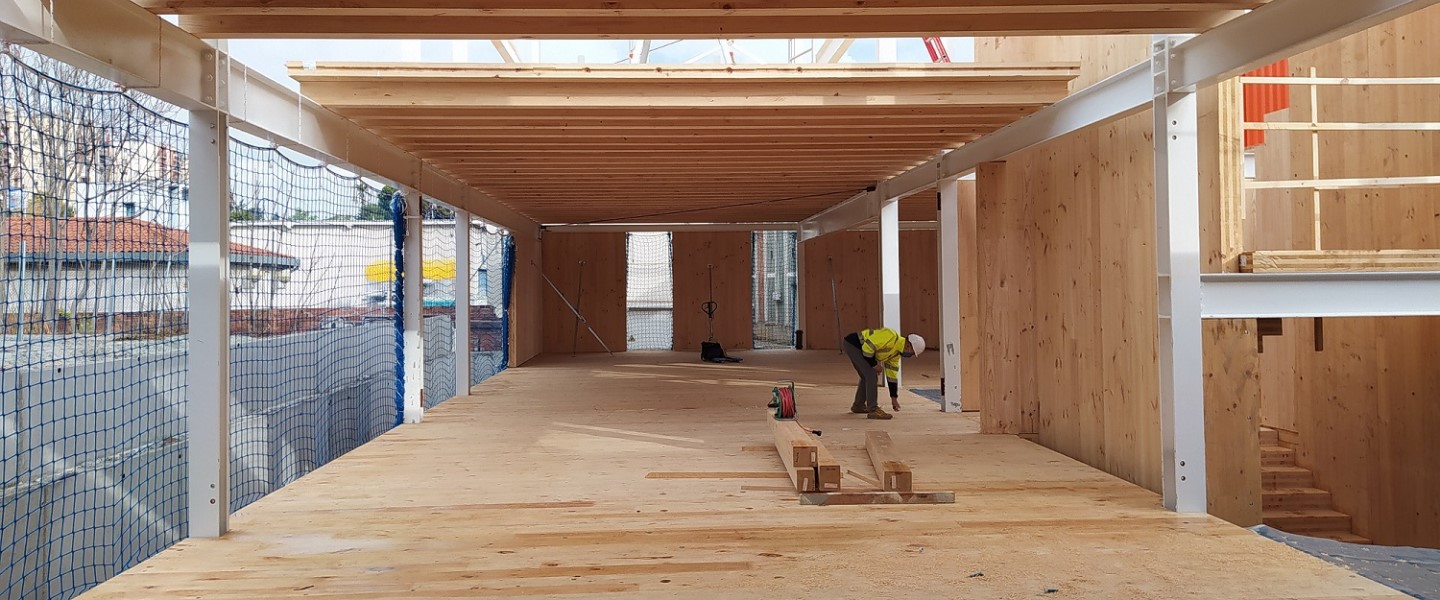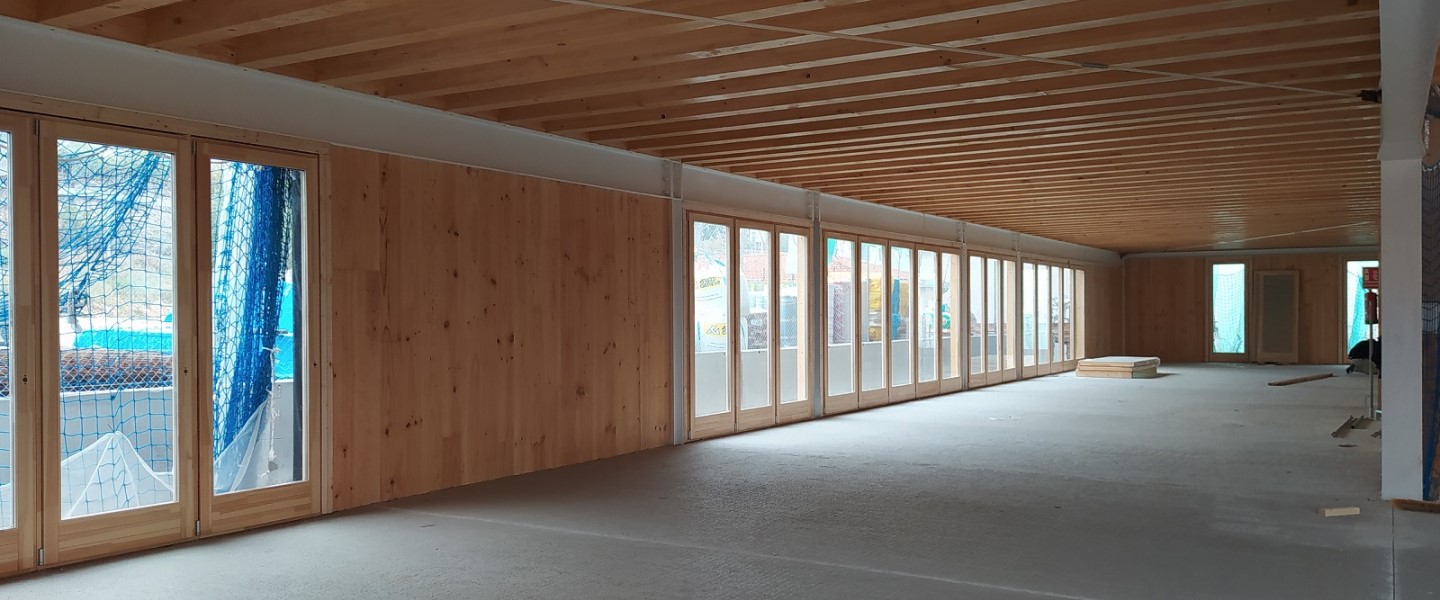We conducted the structural design and construction management of the Porta Trinitat building, a benchmark for sustainability and the circular economy in Barcelona.
General information:
Project name: Structure and construction management of the Porta Trinitat building
Date: 2017 – 2021
Client: Haz Arquitectura
Location: Barcelona
Country: Spain

Talk to our experts
Project summary
The Porta Trinitat building has become a clear example of what architecture should focus on –designing and erecting sustainable zero-energy buildings.
The exterior of the four-storey building, which has two courtyards, will be developed. It was designed for administrative and cultural use and includes a public assembly hall with 170 seats. The first floor will house the offices of the Social Services Department, while the neighbourhood centre will be on the first floor, along with co-working spaces, meeting rooms and storerooms. The third floor will have various multiple-use spaces.
In terms of uses, apart from the social services centre and the community centre, the facility will include the Porta Trinitat Women's Information and Assistance Service (PIAD). The complex will contribute to improving the neighbourhood's public spaces and provide the necessary community facilities.
Project details
With the backbone of the project focused on designing an almost zero-energy building, the planned structure reflects this philosophy, using a mixed system of steel and wood that enables threaded assembly, guaranteeing a dry construction.
The structural system is defined by the presence of 4 metal frames with spans of 10 metres. These porticoes are arranged symmetrically in the longitudinal direction of the floor plan. They are supported by laminated wood plates with a ribbed section that defines the roofs while acting as a horizontal diaphragm.
The foundations are superficial, based on footings and shafts at certain points of the plot, and have been made compatible with the system of ground-coupled heat exchangers which use the subterranean temperature of the ground to warm and cool air, naturally making the ambient air temperature more comfortable and reducing the need to use air conditioning systems.

